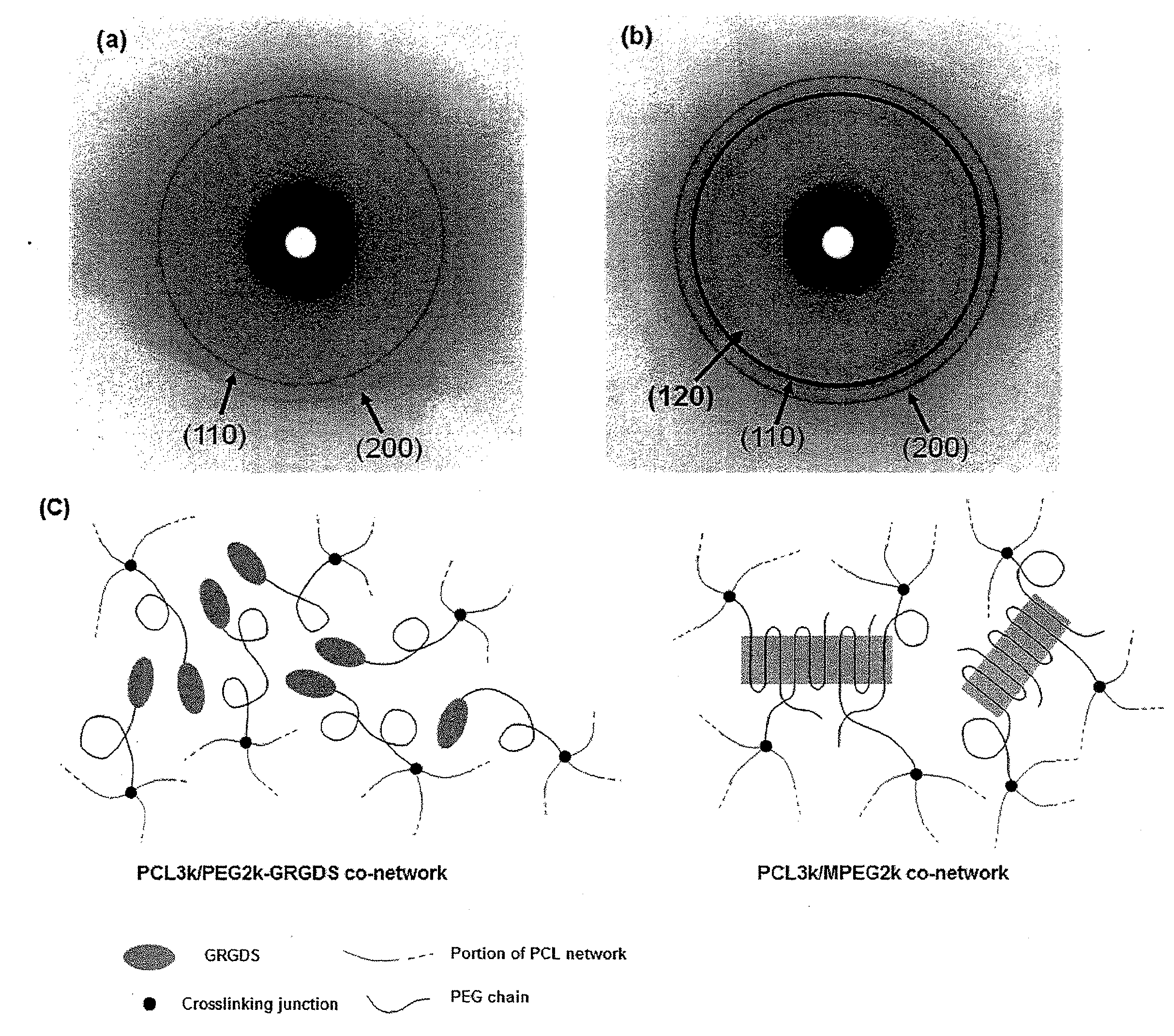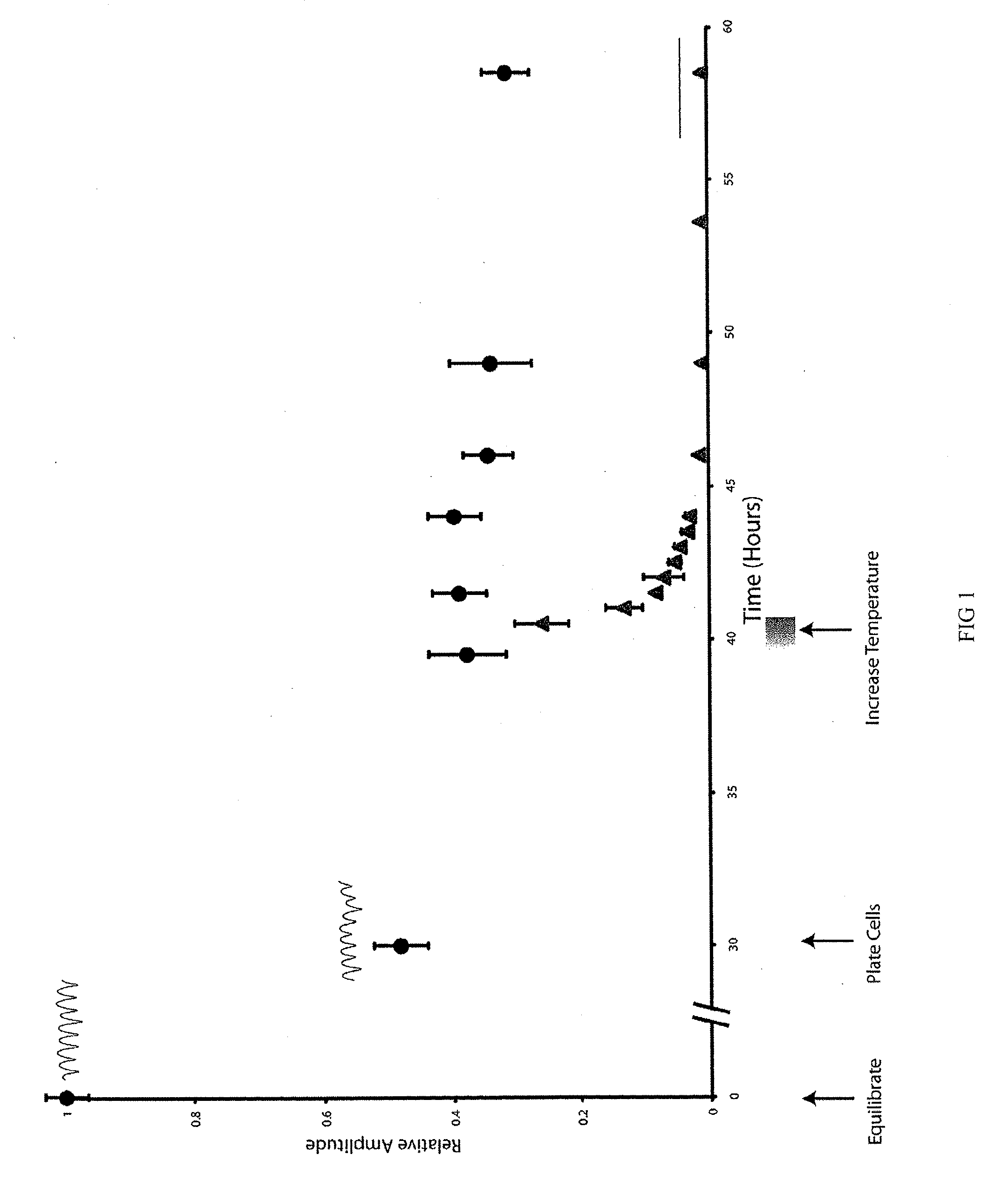Active Cell Culture Via Shape Memory
a cell culture and shape memory technology, applied in the field of cell culture, can solve the problems of unchanging properties of polymeric materials commonly used in cell culture, unfavorable remarkably complex living cells, so as to promote cell proliferation or growth, promote cell adhesion, and promote cell adhesion.
- Summary
- Abstract
- Description
- Claims
- Application Information
AI Technical Summary
Benefits of technology
Problems solved by technology
Method used
Image
Examples
example 1
[0073]To test the hypothesis that programmed changes in surface topography of an SMP substrate could be used to direct cell behavior, cell orientation on an SMP substrate programmed to change from a flat to ridged topography via a hydro-thermal trigger has been analyzed. Referring to FIG. 7, a photocured, glassy SMP was cured on a vinyl record to produce films with an equilibrium surface topography of triangular ridges. Samples were then flattened and fixed by compression above Tg and cooling to room temperature under force. C3H10T1 / 2 cells were allowed to attach for 3.5 h at 23° C. and then shape recovery was triggered by increasing to 37° C. (above the hydrated Tg, which is lover by 5-10° C. than the dry Tg).
[0074]Three groups were tested to: (i) measure surface topography by profilometry after curing, after fixing, and after recovering (n=3); (ii) image cell orientation before recovery (n=2); and (iii) image cell orientation after recovery (n=3). Unflattened samples were the cont...
example 2
[0076]To test the hypothesis that programmed changes in surface topography of an SMP substrate could be used to direct cell behavior, cell orientation on an SMP substrate programmed to undergo changes in surface topography triggered by a temperature tailored to fall within the temperature range compatible with mammalian cell culture has been analyzed.
[0077]Materials and Methods
[0078]To exploit surface shape memory in a cell culture context, the glassy SMP Norland Optical Adhesive 63 (“NOA-63”) (Norland Products, Cranbury, N.J.) was adapted for use under cell culture conditions. NOA-63 is a commercial optical adhesive supplied as a 100% solids prepolymer with a photo-initiator. The SMP was used as received and injected between an aluminum block and a glass slide with a 1 mm thick Teflon spacer. The polymer was cured for 20 min on a hot plate at 125° C. with Spectroline SB-100PC 365 nm UV light source (Westbury, N.Y.). The film was removed from the mold, placed on the hot plate, and c...
example 3
[0098]To determine the fundamental shape-memory characteristics of particular strut design, and to determine the ways in which those characteristics affect cell shape before, during, and after shape-memory recovery, unit-cell archetypes, such as square, triangular (FIG. 12), and circular geometries may be tested and used. The shape memory characteristics of the unit cells will be tested using standard methods, yielding quantitative measures of shape fixing (Rf), shape recovery (Rr), shape memory fill factor (sharpness of recovery), and constrained-strain stress recovery. The kinetics and completeness of shape recovery stimulated in cell culture media with isothermal holding at 37° C. could be tested using the immersion fixture of the TA Instruments DMA-800. The results may be compared with predictions from the same characterization on uniaxial test specimens of the same compositions and in light of the unit cell geometries. To determine the effect of unit-cell shape changes on cell ...
PUM
| Property | Measurement | Unit |
|---|---|---|
| Percent by mass | aaaaa | aaaaa |
| Molar mass | aaaaa | aaaaa |
| Molar mass | aaaaa | aaaaa |
Abstract
Description
Claims
Application Information
 Login to View More
Login to View More - R&D
- Intellectual Property
- Life Sciences
- Materials
- Tech Scout
- Unparalleled Data Quality
- Higher Quality Content
- 60% Fewer Hallucinations
Browse by: Latest US Patents, China's latest patents, Technical Efficacy Thesaurus, Application Domain, Technology Topic, Popular Technical Reports.
© 2025 PatSnap. All rights reserved.Legal|Privacy policy|Modern Slavery Act Transparency Statement|Sitemap|About US| Contact US: help@patsnap.com



